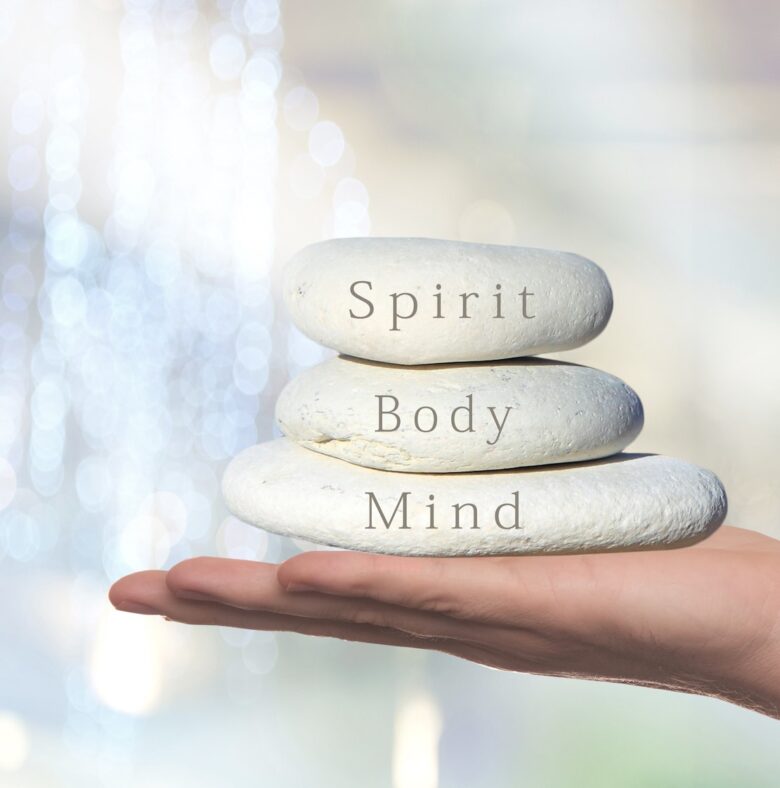To gain a holistic understanding of wellness and therapy, delve into the introduction of this article. Define holistic approaches to wellness and therapy, as they encompass the interconnected nature of the mind, body, and spirit. Embrace this comprehensive perspective to unlock the potential for total well-being.
Definition of holistic approaches to wellness and therapy
Holistic approaches to wellness and therapy encompass a host of techniques and practices. These focus on the overall well-being of a person, taking into account physical, mental, emotional, and spiritual elements.
These methods consider all aspects of a person’s life, and aim to create harmony and balance. Thus, achieving optimal wellness. A mix of techniques such as nutrition, exercise, meditation, counseling, and alternative therapies like acupuncture or herbal remedies often form part of this approach.
The primary aim of holistic approaches is to promote self-healing. They seek to not only address symptoms, but also underlying causes that can contribute to illness.
Pro Tip: When looking for holistic therapies or practitioners, do thorough research. Find someone who suits your specific needs and values. Communication and trust are essential for successful holistic treatment.
The Mind-Body Connection
To optimize your overall well-being, dive into the mind-body connection. Explore the impact of your thoughts and emotions on your physical health. Discover techniques for enhancing mental well-being. Embrace a holistic approach to wellness and therapy, connecting the mind, body, and spirit.
Exploring the impact of the mind on physical well-being
Our minds can have an immense effect on our physical wellness. It hugely affects our total health and can even make us more prone to certain illnesses. Understanding this mind-body connection is key for keeping optimal health.
Our ideas, feelings, and convictions can directly affect our physical health. Studies have demonstrated that pressure, uneasiness, and negative reasoning designs can debilitate the immune framework and add to the advancement of ceaseless sicknesses, for example, coronary illness and diabetes.
But then again, positive musings, a solid feeling of reason, and a sound attitude have been connected to better physical wellbeing results. Inquiries have indicated that individuals with a hopeful point of view tend to have lower circulatory strain, a more grounded invulnerable reaction, and quicker recuperation times from sickness or injury.
Moreover, the mind-body connection reaches out past the domain of physical health. Our mental state can likewise influence how we perceive torment and our capacity to adapt to it. Procedures, for example, mindfulness meditation and cognitive-behavioral therapy have been powerful in helping individuals oversee ceaseless agony conditions.
It is important for all individuals to perceive the intensity of their musings and feelings in forming their general prosperity. By concentrating on developing positive reasoning designs, dealing with pressure levels capably, and embracing procedures for upgrading mental strength, we can use the mind-body connection to advance ideal health.
Don’t miss out on the potential advantages of investigating this incredible connection between the mind and body. Take proactive steps towards understanding your own reasoning designs and passionate states. By joining rehearsals, for example, contemplation or therapy into your everyday schedule, you can smooth out the way towards greater physical prosperity. Embrace this chance to improve your general personal satisfaction by putting your mental health first.
Techniques for enhancing mental health and well-being
Remember, everyone’s journey to better mental health is unique. Finding what works best for each individual is the key. You may have to try different things before you find what resonates with you. To further encourage mental well-being, consider these ideas:
- Mindfulness: Meditation and deep breaths can help stay present and reduce anxiety.
- Healthy relationships: Connecting with loved ones provides emotional support.
- Exercise: Physical activity releases natural mood boosters that can improve both physical and mental health.
- Self-care: Taking time for joyful activities is essential for good mental health.
- Professional help: If dealing with persistent or severe mental distress, seeking a counselor or therapist can help.
- Stay connected: Reach out to friends and family to create a sense of belonging and support.
- Reduce stress: Identify sources of stress and use healthy coping strategies.
- Practice gratitude: A thankful attitude shifts focus to positive aspects of life.
By incorporating these tips into daily routines, mental health and well-being can be improved. Self-care and seeking support are very important steps towards a happier life.
The Body-Spirit Connection
To understand the body-spirit connection, delve into exploring the connection between physical health and spiritual well-being. Discover practices for nurturing the spirit and promoting holistic wellness. Harness the power of this deep connection between the body and spirit for overall well-being and fulfillment.
Exploring the connection between physical health and spiritual well-being
Our physical health is closely linked to our emotional and mental states. Exercising and engaging in physical activities releases endorphins, which help us feel happy and reduce stress. Furthermore, it promotes better sleep quality, giving us mental clarity and emotional stability. By nourishing our bodies with healthy foods and adequate hydration, our energy levels and cognitive function improve. This allows us to participate in mindfulness practices, such as meditation or yoga, deepening our connection with ourselves and the world.
Spirituality also contributes to physical health. When we connect with our spirituality through practices like prayer or being in nature, it brings us a sense of purpose and inner peace, impacting all aspects of our lives. Studies have even shown that spiritual people tend to have lower stress hormones and greater immune function. In addition, their spiritual beliefs and practices act as protective factors against depression, cardiovascular diseases, and other adverse health outcomes. This clearly demonstrates the strong relationship between the body and spirit.
Practices for nurturing the spirit and promoting holistic wellness
Ancient civilizations had rituals to honor the connection between body and spirit. Shamans conducted sacred ceremonies with dance, song, herbs, and prayers. This showed the importance of nurturing both physical and spiritual health for holistic wellness.
Today, there are several practices to nurture the spirit:
| 1. Mindfulness meditation: | Taking time each day to be aware of thoughts, emotions, and sensations brings inner peace. |
| 2. Creative activities: | Writing, painting, or playing music can express yourself and reach the spiritual realm. |
| 3. Connecting with nature: | Being close to nature can bring feelings of interconnectedness and serenity. |
| 4. Gratitude: | Appreciating what you have brings positivity and contentment. |
| 5. Yoga or Tai Chi: | Combines physical movement with mindfulness for balance between mind, body, and spirit. |
| 6. Nurturing relationships: | Building strong connections helps with spiritual growth and well-being. |
Integrating Mind, Body, and Spirit
To approach the integration of mind, body, and spirit in holistic wellness and therapy, the importance of a holistic approach and strategies for incorporating holistic practices into everyday life are the solutions. In this section, we’ll examine these sub-sections, highlighting the significance of a holistic approach and providing practical guidance on incorporating holistic practices for overall well-being.
The importance of a holistic approach to wellness and therapy
When it comes to achieving wellness, taking a holistic approach is essential. This means connecting the mind, body, and spirit for a comprehensive healing process. By recognizing the interconnectedness of these parts, individuals can not only gain physical health but also mental and emotional well-being.
Adopting a holistic approach allows individuals to target the root of their issues instead of just treating the symptoms. Rather than focusing on physical symptoms, this approach considers mental and emotional factors that may be affecting overall health. By addressing these issues, individuals can find long-term solutions to their health concerns.
Moreover, holistic therapy acknowledges how emotions and thoughts affect physical well-being. Negative emotions and stress manifest as physical symptoms. With a holistic therapist, individuals can learn techniques to manage their stress levels and promote overall wellbeing.
Interestingly, holistic medicine has been practiced for centuries in various cultures. Ancient civilizations like Chinese Traditional Medicine, Ayurveda in India, and Indigenous healing practices all understood the mind-body-spirit connection. These traditions valued balance in life, recognizing that imbalances in any one area could impact overall health.
Strategies for incorporating holistic practices into everyday life
For a balanced life, certain strategies can aid in integrating holistic practices into daily living. Such techniques can provide a greater sense of wellbeing.
- 1. Dedicate some time daily to activities like meditation, yoga or deep breathing. This will help calm the mind, lessen stress and bring relaxation.
- 2. Eat mindfully. Pay attention to food and enjoy each bite, feeling the nourishment it provides to your body.
- 3. Enjoy physical activity. This not only helps with physical health but also has an effect on mental and emotional health. Find joy in movement, whether it is taking a walk or playing a sport.
Furthermore, explore complementary therapies like acupuncture or aromatherapy. These may provide unique benefits tailored to individual needs and goals.
Tip: Integrating holistic practices into everyday life is a personal journey. Experiment with different techniques to find what works best. Be open-minded and discover new ways to nurture your mind, body and spirit.
Case Studies
To gain a deeper understanding of the effectiveness of holistic wellness and therapy in improving the mind, body, and spirit, dive into this section on case studies. Discover real-life examples of individuals who have found value in holistic approaches, and explore the outcomes and success stories of various holistic therapies.
Real-life examples of individuals who have benefited from holistic approaches
Real-life examples of individuals benefiting from holistic approaches are inspiring! These cases show the strength of holism in boosting overall wellness and attending to multiple health problems. Let’s learn more about some fascinating instances that demonstrate the strength of holistic practices.
- Amanda, a middle-aged pro, was suffering from chronic stress and anxiety. Medication wasn’t her choice, so she tried holistic therapies such as acupuncture and mindfulness-based meditation. Gradually, her anxiety levels dropped and she got better control of her emotions.
- John, who had been enduring migraines for ages, found relief through holism. Exercise and dietary changes from a holistic nutritionist, plus herbal supplements for their therapeutic effects, lessened his migraine frequency and intensity. Plus, his energy levels rose!
- Sarah, a cancer survivor, used holism to complement her traditional treatments. Along with chemo, she did yoga, massage therapy, and aromatherapy. These practices brought emotional backing during her journey while reducing the side effects of her medical treatments.
- Mark had been dealing with chronic arthritis pain for years. He discovered the healing power of chiropractic care, plus herbal remedies from a naturopathic doc. This combined approach helped him manage his pain more than just medications or invasive procedures.
Exploring these stories further reveals worth-mentioning information. Each person profited from personalized plans for their needs and circumstances. Plus, lifestyle modifications like healthier diets and regular physical activity boosted their lives’ quality.
For similar results, those searching for holistic solutions can look into various directions. Connecting with competent practitioners who specialize in different disciplines is the base for success. Plus, keeping an open mind, taking part actively in therapy sessions, and following prescribed regimens help a lot towards positive outcomes. By taking a proactive part in their health journey, individuals can use holistic approach’s power to improve overall well-being and find sustainable relief from multiple health issues.
The outcomes and success stories of holistic therapies
Holistic therapies are renowned for their remarkable outcomes and success stories. They offer individuals various benefits when seeking alternative treatments. Here are some essential aspects to understand the power of holistic therapies:
- Improved wellbeing: Holistic therapies focus on the interconnectedness of the mind, body, and spirit, aiming to promote balance. This can lead to both physical health and mental clarity.
- Stress and anxiety reduction: Practices like meditation, acupuncture, and yoga are proven to reduce stress and manage anxiety. These tools help cultivate inner peace and resilience.
- Pain management: People may find relief from chronic pain with holistic methods such as massage therapy, chiropractic treatments, or herbal remedies. These are non-invasive options.
- Self-care empowerment: Holistic therapies encourage individuals to take an active role in their health by emphasizing the importance of self-care.
Moreover, treatments are adapted to each person’s unique needs. There are many techniques available within the realm of holistic therapies.
It is critical to look at the true story of how transformative this approach can be. Sarah was one such example. She had suffered from chronic back pain for years, with conventional treatments providing only temporary relief.
She researched holistic approaches and tried acupuncture. Surprisingly, after a few sessions, her pain decreased and her energy levels increased.
It inspired Sarah to explore other holistic therapies. She continues to receive acupuncture treatments, as well as incorporating other practices into her routine.
Conclusion
To wrap up this holistic journey towards wellness and therapy, let’s delve into the conclusion. Summarizing the key points and benefits of holistic approaches to wellness and therapy will provide a comprehensive solution to enhancing your mind, body, and spirit.
Summarizing the key points and benefits of holistic approaches to wellness and therapy.
Holistic approaches to wellness and therapy have increased in popularity recently. This is because they handle the mind, body and spirit all at once. There are many benefits that come with this approach.
- 1. It understands how physical health is linked to mental, emotional and spiritual well-being.
- 2. It provides a sense of balance and harmony.
- 3. It focuses on preventing issues from occurring.
- 4. It encourages self-care.
- 5. Plans are tailored to each individual.
- 6. It uses various healing modalities.
Furthermore, holistic therapies help individuals to connect with themselves and with others. This can help their healing process.
It is important to remember that holistic approaches are more than just dealing with physical symptoms or ailments. An integrated approach allows a person to comprehend their health more completely. This will not only reduce symptoms but also improve overall quality of life.
Do not miss out on the advantages of holistic practices. Incorporating elements into your wellness routine and exploring different therapies can open up new possibilities for personal growth and self-discovery. Embrace holistic approaches to achieve optimal well-being today!
Frequently Asked Questions
FAQs about Holistic Approaches to Wellness and Therapy: Mind, Body, and Spirit
Q: What is a holistic approach to wellness and therapy?
A: A holistic approach to wellness and therapy focuses on treating the whole person – mind, body, and spirit – rather than just addressing isolated symptoms or issues. It emphasizes the interconnectedness of these aspects and aims to achieve overall well-being and balance.
Q: What are some examples of holistic therapies?
A: Some examples of holistic therapies include acupuncture, aromatherapy, yoga, meditation, Reiki, massage therapy, nutritional counseling, and herbal remedies. These practices are designed to promote healing and enhance well-being by addressing the person as a whole.
Q: Can a holistic approach help with mental health conditions?
A: Yes, a holistic approach can be beneficial for mental health conditions. By considering the mind, body, and spirit, holistic therapies can help reduce stress, improve relaxation, and enhance mood. They can complement traditional treatments and provide additional support for mental well-being.
Q: How does a holistic approach promote physical health?
A: A holistic approach promotes physical health by addressing the underlying causes of physical ailments, rather than merely treating symptoms. It focuses on lifestyle changes, nutrition, exercise, and stress reduction to improve overall well-being and prevent illness.
Q: Is a holistic approach to wellness and therapy suitable for everyone?
A: A holistic approach can be suitable for most people, regardless of age, gender, or health condition. However, it is important to consult with healthcare professionals to ensure it complements any existing treatments or medications. They can provide guidance on the most appropriate holistic therapies for individual needs.
Q: How can I find a qualified holistic therapist?
A: To find a qualified holistic therapist, you can start by asking for recommendations from your healthcare provider or trusted friends who have had positive experiences with holistic approaches. Additionally, you may search online directories, read reviews, and verify their credentials and certifications before scheduling an appointment.



